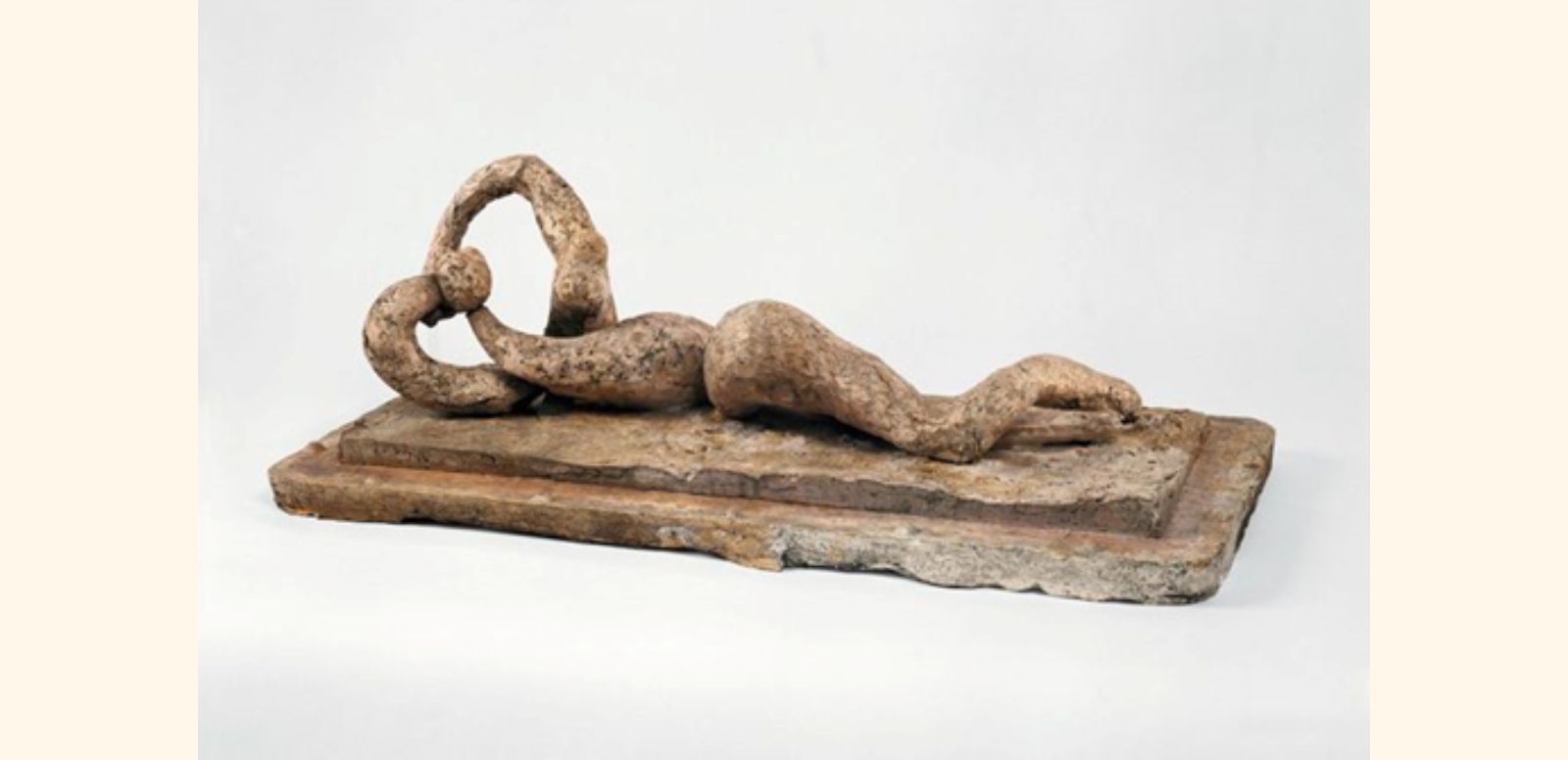
Fundación Almine y Bernard Ruiz-Picasso, Madrid. Préstamo temporal en el Museo Picasso Málaga
© Sucesión Picasso, VEGAP, Madrid, 2023.
In the 1930s, when he settled in Boisgeloup, Picasso concentrated mainly on sculpture. In 1931 he began to model in plaster figures of bathers, a motif associated with Marie-Thérèse, who was apparently an excellent swimmer. This sculpture is an abstract representation of a reclining female figure with stylised curved forms, made in plaster with a textured surface.
This work by Picasso is a perfect example of his late sculptural style, which became progressively more abstract and simplified. The female figure, although recognisable as a human figure, is depicted in an imprecise manner, with organicity and movement.
Picasso lived and created in a period of constant formal research, in which artists sought to break with traditional conventions by experimenting with new forms of expression. In this sense, Lying Bathing Girl represents one such line of development, where Picasso sought to go beyond the limits of realistic representation and explore the possibilities of abstraction in sculpture.
Picasso uses soft, undulating forms to represent the human body, drawing inspiration from the female figure, a recurring theme in Picasso's work. Although abstract, the figure evokes beauty and power with its stylised appearance, conveying sensual femininity in an expressive manner.
Reference sources:
Museo Picasso Málaga: https://museopicassomalaga.org/coleccion/banista-tendida
Museo Nacional Centro de Arte Reina Sofía: https://www.museoreinasofia.es/coleccion/obra/banista-tendida
Fundación Picasso - Museo Casa Natal: https://fundacionpicasso.malaga.eu/es/coleccion/125/banista-tendida.html

